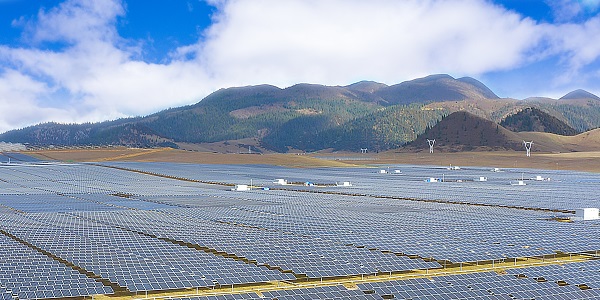The first of the power generation units at the Xingchuan photovoltaic (PV) demonstration power station in Ganzi Tibetan Autonomous Prefecture, Southwest China's Sichuan Province, were put into operation recently.
Developed and operated by State Power Investment Corporation Limited (SPIC), the power station is the world's first ultra-high-altitude PV demonstration base.

A view of the Xingchuan photovoltaic demonstration power station in Ganzi Tibetan Autonomous Prefecture, Southwest China's Sichuan Province [Photo/sasac.gov.cn]
Covering an area of about 13,650 mu (about 910 hectares), the power station has a total installed capacity of 600 megawatts.
With a total investment of about 3.2 billion yuan ($450.88 million), the power station is expected to generate nearly 1.27 billion kilowatt-hours of power annually once fully operational, equaling the power produced by burning about 390,000 metric tons of standard coal and eliminating about 1.07 million tons of carbon dioxide.
The project is expected to optimize Sichuan's energy structure and help guarantee a balance of energy supply and demand in the region in response to extreme weather and emergencies.

A view of the power grid connecting to the Xingchuan photovoltaic demonstration power station in Ganzi, Sichuan [Photo/sasac.gov.cn]
SPIC has realized application of several industrial innovations based on the Xingchuan PV demonstration power station.
For example, the station is equipped with PV modules, inverters, supports and energy storage facilities and adopts 127 kinds of contrast solutions to carry out experiments on new technologies including methods of PV and energy storage.
What's more, emerging digital technologies such as the cloud, big data and the internet of things are used in smart engineering management, digital twin production and operation and smart inspection of the inverters.
(Executive editor: Wang Ruoting)